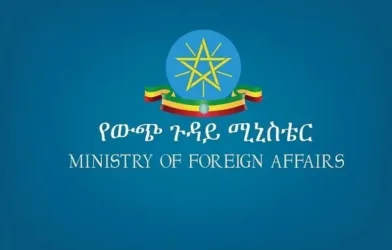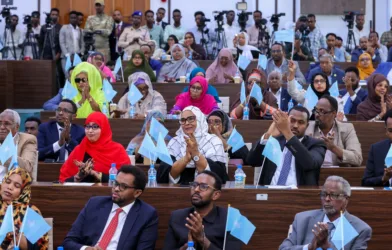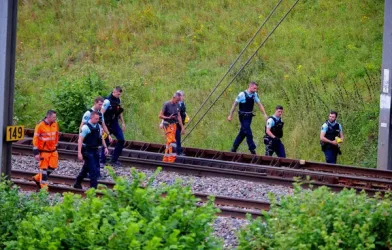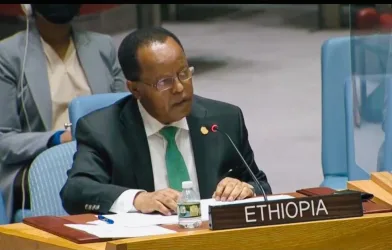 “Improved primary roads before immense development”
“Improved primary roads before immense development”
It seems, after two decades of bloody conflict the weak economy in East Africa wants to opt for durable recovery and boost the local economy which has been in shambles with booming transport infrastructure. However the steps should be called into question and to me the frequently asked question is: “How can the people with appropriate expertise in the field of technology transform dreams into possibilities?.
Well, to tell the truth, lack of peaceful political environment coupled with shortage of experienced engineers has long prevented the central government as well as key partners to invest more in roads, airports and seaports infrastructure. Today, according to UN report on infrastructure, the country’s network of roads spans 22, 000 km of which only 2757 kilometers are paved while rail transport, pipelines and inland waterways remain nonexistent.
I have personally drawn some of the engineering analysis in this piece from direct observations and practical works. Look at how weak maintenance and rehabilitation, damages from fighting and vandalism have largely put the paved roads in bad condition, and in particular cave-ins on the primary roads continue to pose greatest challenge to vehicular transportation across Somalia.
Take Puntland and Somaliland where regional governments at least established institutional capacities as example. The situation is quite different from south-central regions; yet Diaspora returnees can’t land at Puntland airports in modern airliner.
Something that’s worthy to be praised points to Puntland President Dr. Abdiweli Mohamed Ali who cut the ribbon for flagship project- 2.65km paved runway that would replace the existing 1.8km gravel runway On December 4, 2014. Thanks to Kuwaiti government that contributed USD 10 million in loan to Somalia’s development sector.
If the construction of Bossaso airport is successfully completed, surely Somalia will make greater stride in aviation sector since by now, Mogadishu, Kismayo, Berbera and Hargeisa airports accommodate any wide cargo and passenger planes in conformity with code 4C clause.
Somalia could have generated colossal amount of money from aviation. To this end I am optimistic about the construction of new runways, passenger buildings, parking areas, runway lightings, air traffic control towers and fire and rescue stations in the coming five years anywhere in the country.
Before the state collapse in 1991, Somalia had three classes of roads- Primary, Secondary and Feeder roads, typical classification that needs to be revised for various reasons and all are today obviously interwoven with daily activities.

Modern Standards
During my stay in Puntland last summer, Mohamud Abdinur Adan, the Chief Executive Officer of Puntland Highway Authority told me that updated technical experience and modern standards and technology could help local authorities develop new standards for the design, construction, operation and maintenance of roads.
As huge progress largely saw rehabilitation works in the last 16 years, Adan further spotlighted to me that he is more hopeful about the future and eyes the students pursuing engineering courses at local universities and overseas.
Maybe, executing raw data in software appears challenging task to many let alone empirical tests being performed on soil on which roads and multimillion building projects are constructed. RC framed structures too require considerable analysis on design.
Municipalities in Puntland and Somaliland currently undertake the construction of new gravel roads as well as simple urban roads with the help of contractors devoid of thorough knowledge in legible manuals. Clearance operations, mainly targeting clogged roads are monthly if not daily turnouts for bodies in charge of mammoth engineering projects
I have learned on Somali channels that littoral towns like Eyl, local communities directed themselves towards one of the most ambitious plans by raising funds for the construction of over 100km paved road. Except for foreign consultancies and very few local firms, the geometric, pavement and drainage designs of such roads are arduous and cost client painstaking amount.
Given the hopes for lasting peace, Somalia needs to upgrade and pave its 18,229km earth roads in rural areas in order to improve access to market centers for rural communities.
Carriageway expansion, resurfacing works and construction of bypasses should be included in the important tasks ahead for the central government and federal states.
More importantly, the existing primary roads have sharply deteriorated due to poor drainage system and based on the level of performance authorities on the ground should also focus more on surface dressings, installation of drainage structures such as culverts and bridges, expansion of highway network and develop a uniform framework for much-needed designs.
Abdirashid M. Dahir is fresh consultant and undergraduate civil engineering student with interest in Highway Engineering. He also worked for Puntland Highway Authority. Follow him on twitter @somaliajunkie or he can be reached at ducale114@gmail.com
Somalia’s Poor Transport Infrastructure [Op-Ed]
Published: February 5, 2015







